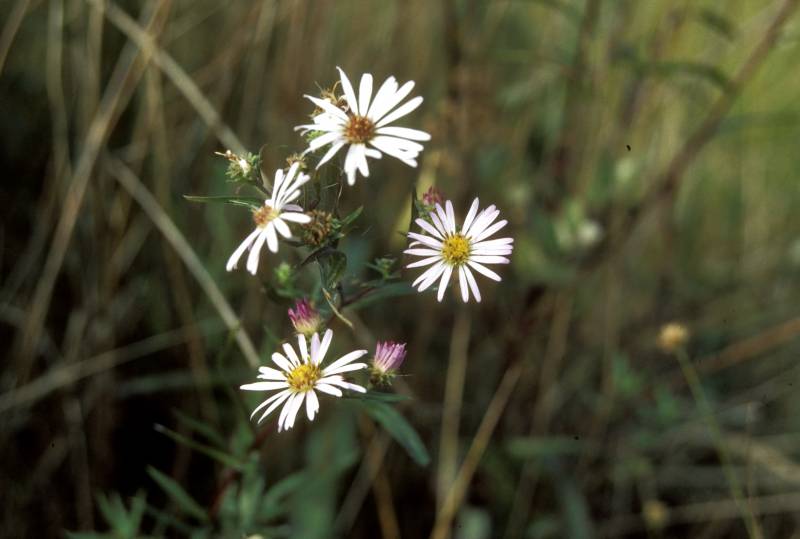Distribution: Occurring east of the Cascades crest in northeastern Washington; Alaska to Washington, east across Canada and the northern U.S. to the Atlantic Coast.
Habitat: Cold bogs.
Flowers: July-September
Origin: Native
Growth Duration: Perennial
Conservation Status: Threatened in Washington (WANHP)
Pollination: Bees, flies, butterflies
Slender perennial from slim, creeping rhizomes, the stem 1.5-8 dm. tall, glabrous below, becoming puberulent in lines upward.
Leaves linear, 2-5 mm. wide, slightly clasping, entire, the lowermost reduced and early-deciduous.
Inflorescence short and broad, the heads few, small, the disk 7-13 mm. wide; involucre 5-7 mm. high, glabrous, its slender, pointed bracts somewhat imbricate, often with purple tips and margins; disk flowers yellow; rays 20-50, white or pale bluish, 7-15 mm. long; pappus of numerous capillary bristles.
Fruit an achene.
Publication: Taxon. 31: 358. 1982. 1982.
Aster junciformis Rydb. [HC]
Aster laxiflorus Lindl. var. borealis Torr. & A. Gray
PNW Herbaria: Specimen records of Symphyotrichum boreale in the Consortium of Pacific Northwest Herbaria database.
WA Flora Checklist: Symphyotrichum boreale checklist entry.
OregonFlora: Symphyotrichum boreale information.
E-Flora BC: Symphyotrichum boreale atlas page.
CalPhotos: Symphyotrichum boreale photos.
USDA Plants: Symphyotrichum boreale information.





